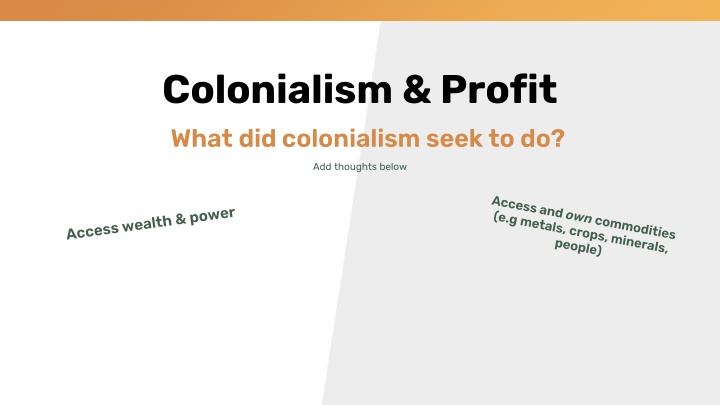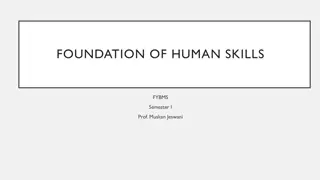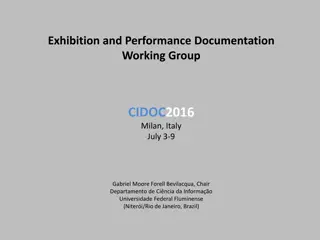
Impact of Colonialism on Land Exploitation and Modern Agriculture
Colonialism sought to exploit land for profit by imposing individual land rights, leading to the overuse and degradation of natural resources. Extraction of resources like gold and silver, coupled with destructive agricultural practices such as sugar monoculture, reshaped landscapes globally. This legacy persists today, with cash crops replacing staple foods and ecological consequences affecting our world.
Download Presentation

Please find below an Image/Link to download the presentation.
The content on the website is provided AS IS for your information and personal use only. It may not be sold, licensed, or shared on other websites without obtaining consent from the author. If you encounter any issues during the download, it is possible that the publisher has removed the file from their server.
You are allowed to download the files provided on this website for personal or commercial use, subject to the condition that they are used lawfully. All files are the property of their respective owners.
The content on the website is provided AS IS for your information and personal use only. It may not be sold, licensed, or shared on other websites without obtaining consent from the author.
E N D
Presentation Transcript
Colonialism & Profit What did colonialism seek to do?
To occupy land, colonizers could not just live in nature to expand their empire, land had to be subjected to exploitation, overuse, pollution, and deforestation. Nature and open land was seen as an opportunity to be made useful and profitable. Indigenous ideals of collective land ownership were forced out as individual land and property rights were imposed.
Colonialism & Extraction How was the land treated? Add thoughts below
Colonizers were amazed and obsessed with gold and silver throughout the 16th-19th century, millions of kilograms of silver were extracted from the mines of Latin America and brought to Europe.
One of the most destructive agrarian practices was from sugar cane production everywhere sugar cane was cultivated, woodlands, forest life, and rainforests were demolished: in the Canary and Cape Verde islands to produce sugar cane, forests and woodlands were cleared and became deserts; in the Americas, land was stripped of forest life and burned completely; in the West Indies and Guyana, rainforests were destroyed; Haiti, named the green island in Arawak, was stripped of trees.
Sugars monoculture logic was applied to various other commodities for profit: coffee plantations, rubber plantations, ricefields, and cotton plantations. Because of this, soils became exhausted and sterile.
Around the world, staple crops relevant to each continent's climate, soil, and culture were replaced with cash crops crops produced for their monetary value rather than for sustainable agricultural use by the grower.
Todays Consequences How has colonialism shaped our world today?






















